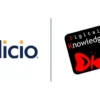Add additional features to existing credential systems while preserving their original functionality with Indicio Proven.
By Trevor Butterworth
The emerging age of digital credentials will transform how we interact digitally, prove identity, and share data. The benefits will be reduced fraud and friction, increased data privacy and security, and the ability to create seamless processes based on data that can be instantly verified and acted on.
There are different kinds of credentials for different needs: some offer only basic authorization; others can manage the kind of data sharing and verification that are essential for business. The key is to be able to interoperate between the two, where a credential with limited features can be given a wrapper that preserves its original function while providing the advanced features of other credential types.
Enter Indicio Proven’s newest feature: a credential bridge. It’s a simple way to bridge the gap between limited and more advanced credential features and allow participation in multiple credential ecosystems.
For example, the Microsoft Entra Verified Identity Platform has basic features but is widely available. It only supports one credential type (JSON Web Token VC), and one DID method (DID: web); it doesn’t support OpenID4VCI (essential to interoperate with European Union’s preferred digital identity protocol), has limited digital wallet support (Microsoft Authenticator), limited governance capability, and doesn’t contain the privacy-preserving features of other verifiable credential types.
These features may not matter to some users, but, increasingly, we see enterprise and public sector organizations around the world opting for more expansive features to meet business, customer, and citizen needs. Why shut yourself out of these ecosystems?
Using Indicio Proven as your credential bridge, you don’t have to limit your options because it’s not a case of one or the other. Now, you can wrap an Entra identity in different credential formats, preserve the underlying capacity to verify it as an Entra identity, and take advantage of Indicio’s:
- Support for additional DID methods
- Selective disclosure, zero-knowledge proofs, and predicate proofs to share data in privacy-preserving ways.
- Support for additional OIDC specs for interoperability with the EU.
- Support for additional communication protocols such as DIDComm, which opens up the capacity of direct, secure communication between DID holders.
- Enable use of peer DIDs for subjects, which improves security
- Convert to additional credential types such AnonCreds, SD-JWT, BBS+, mDoc/mDL.
The point is — don’t get locked into a single path when the technology is advancing rapidly. It is highly unlikely that there will ever be a single credential format or protocol that does everything. So why not be able to use them all?
Contact Indicio to learn more about Indicio Proven and how it can transform your business or mission.
#####






